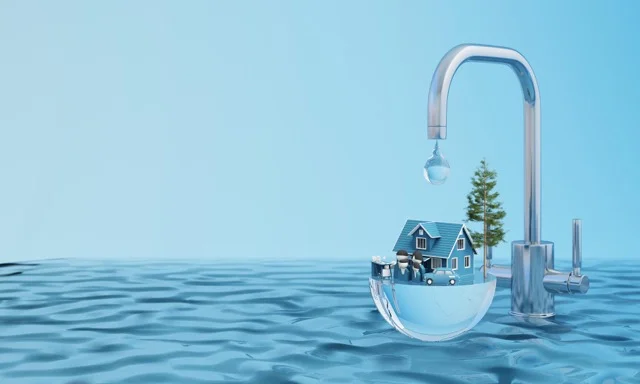Fascination About Reclaim Waste
Table of ContentsWhat Does Reclaim Waste Do?What Does Reclaim Waste Mean?Reclaim Waste - An OverviewThe Ultimate Guide To Reclaim WasteHow Reclaim Waste can Save You Time, Stress, and Money.
Check out the types, incidents, and types of fluid waste. Residential sewage waste refers to the waste and items from a residential sewage-disposal tank. This sort of waste is developed by humans in homes, schools, and various other structures. This only consists of septic tanks that have a drainpipe field. The proper management and disposal of residential sewer waste require liquid waste to be transferred to a sewage treatment plant where the proper techniques and tools are put on purify and throw away waste.
Business waste usually includes possible hazards, such as combustible materials or a mix of liquid and solid waste items, and calls for an advanced and in-depth disposal procedure. The disposal of business waste typically involves the filtering of waste prior to transportation to ensure risk-free and correct disposal. Industrial waste is produced from by-products and drainage of commercial procedures and manufacturing.
This type of waste can not make use of the exact same sewer monitoring transportation or processes as septic or business fluids. The industrial waste administration procedure needs the examination and testing of liquid waste before it undergoes the disposal process (liquid waste disposal). Runoff waste is the fluid waste that comes from runoff and excess stormwater in highly populated areas or cities
Drainage waste can cause contamination and flooding if not managed properly. Making certain correct waste monitoring can stop calamities and reduce environmental harm.
Excitement About Reclaim Waste
Get in touch with PROS Services today to discover our waste monitoring and disposal solutions and the appropriate ways to care for the fluid waste you produce.
(https://ameblo.jp/reclaimwaste1/entry-12874802223.html)This so-called 'wastewater' is not only an essential source however, after therapy, will be released to our land, rivers or the ocean. Utilized water from toilets, showers, baths, kitchen area sinks, washings and commercial procedures is recognized as wastewater.

water utilized to cool down machinery or tidy plant and equipment). Stormwater, a form of wastewater, is overflow that streams from farming and urban areas such as roofs, parks, yards, roadways, courses and rain gutters into stormwater drains pipes, after rainfall. Stormwater streams unattended directly to regional creeks or rivers, ultimately getting to the sea.
The Ultimate Guide To Reclaim Waste
In Queensland, a lot of wastewater is treated at sewage treatment plants. Wastewater is delivered from residential or commercial sites with a system of sewers and pump terminals, called sewerage reticulation, to a sewage treatment plant. Neighborhood federal governments construct, keep and operate most sewer treatment plants. Operators are certified under the Environmental Defense Act 1994 to release treated wastewater at an acceptable ecological criterion right into waterways.
The Division of Natural Resources recommends city governments regarding managing, operating and preserving sewage systems and treatment plants. In unsewered areas, city governments may need homeowners to set up specific or household sewer therapy systems to treat domestic wastewater from bathrooms, kitchens, bathrooms and washings. The Department of Natural Resources authorizes the usage of house systems when they are confirmed to be effective.
Many stormwater receives no therapy. In some brand-new neighborhoods, treatment of some stormwater to remove trash, sand and gravel has actually started using gross toxin traps. Wastewater therapy occurs in four stages: Gets rid of strong matter. Larger solids, such as plastics and various other items wrongly discharged to drains, are gotten rid of when wastewater is passed through screens.
Utilizes tiny living microorganisms understands as micro-organisms to break down and remove staying liquified wastes and fine particles. Micro-organisms and wastes are incorporated in the sludge.
The Reclaim Waste Ideas
Nutrient removal is not readily available at all sewer therapy plants since it requires expensive specialized tools. Clear fluid effluent produced after therapy may still include disease-causing micro-organisms - liquid waste disposal.

Many wastewater flows right into the sewerage system. Under the Act, regional federal governments carry out authorizations and permits for eco appropriate tasks (ERAs) involving wastewater releases that may have a local impact.
Reclaim Waste Fundamentals Explained
Tracking supplies valid information about water top quality and can validate that permit problems are being fulfilled. The details gotten via monitoring gives the basis for making water top quality choices.